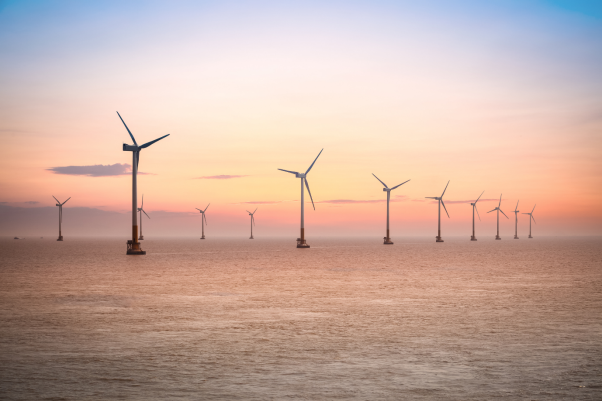The Science Based Targets initiative (SBTi) has launched the Net-Zero Standard as a framework and standard for aligning corporate net-zero targets with climate science. As part of the launch, Ørsted’s 2040 net-zero full value chain decarbonization target has now been validated as science-based.
SBTi’s new Net-Zero Standard provides a common, robust and science-based definition of net-zero and offers companies a way to set verified decarbonization targets with long-term emissions reduction plans that are consistent with limiting the global temperature rise to 1.5 °C above pre-industrial levels. Ørsted is the first and only energy company to receive the new net-zero validation and one of only seven companies on the list.
“Ørsted strongly welcomes the SBTi’s new Net-Zero Standard, which provides much needed clarity on what is required for corporate net-zero targets to actually help fight climate change,” says Mads Nipper, CEO at Ørsted. “In Ørsted, we’re proud to be the first energy company in the world to receive validation of our 2040 net-zero target as being fully aligned with what climate science requires.”
“We see growing ambitions from businesses to reach net-zero, and that’s absolutely necessary to reach a net-zero world,” continues Nipper. “However, it’s critical that these goals meet the requirements of climate science. I encourage all business leaders who want to have a real impact on climate to commit to the necessary near-term and long-term reductions under the new SBTi-standard.”
The Paris Agreement states that global emissions must reach net-zero by mid-century to stabilize temperature rise to 1.5 °C above pre-industrial levels. This has led to a boom of corporate net-zero goals in recent years, with over two-thirds of the global economy now aiming to reach net-zero emissions by mid-century. Despite this trend, pathways to meet net-zero emissions have been translated in varying and inconsistent ways, resulting in growing criticism of corporate climate targets.
Up until now, there has been no credible criteria to define what long-term net-zero targets – consistent with the 1.5 °C scenario – look like. As a consequence, businesses have had significant discretion on how they define their pathways towards net-zero, allowing some to claim net-zero and basing their net-zero commitments to a large extent on offsets without the significant reduction in emissions required to accelerate decarbonization.
SBTi’s new standard spells out that rapid action is needed to halve emissions before 2030, and that long-term deep emissions cuts of 90-95% across the value chain are essential before 2050 for net-zero targets to align with science. In practice, this means that companies must place a cap of 5-10% on the amount of residual emissions that they offset through carbon removal projects. With the new framework, businesses now have a way to substantiate their net-zero plans with underlying long-term reduction targets, ensuring that these pathways are consistent with the latest climate science.
Ørsted was previously one of the first energy companies to set a near-term science-based target for reducing emissions from power and heat generation. Its targets include reducing scope 1 and 2 GHG emissions to 10 g CO2e/kWh by 2025, corresponding to a 98% reduction from a 2006 base year. In 2020, raising its ambition to address its entire carbon footprint, Ørsted committed to reaching net-zero emissions across its entire value chain by 2040. To help realize near-term action towards this goal, Ørsted put in place a specific value chain decarbonization target of reducing its absolute scope 3 GHG emissions by 50% by 2032 from a 2018 base year.
By phasing out coal and accelerating the build out of green energy, Ørsted is fully on track to meet its scope 1 and 2 target. To meet its scope 3 target, Ørsted is gradually reducing its natural gas sourcing portfolio and has launched an industry-leading supply chain decarbonization program, closely engaging with suppliers to reduce emissions from the goods and services it sources.
Building on its accelerated decarbonization progress to-date, Ørsted now substantiates its commitment to reaching net-zero emissions across the entire value chain by 2040 by setting additional science-based long-term emissions reduction targets. It will reduce GHG emissions in scope 1-2 from energy generation and operations to 1 g CO2e/kWh, corresponding to a 99.8% reduction from 2006 and down from targeted 10 g CO2e/kWh in 2025. The company plans on reducing GHG emissions in scope 1-3 from the entire renewable energy portfolio to 2.9 g CO2e/kWh, which corresponds to a 99% reduction compared to 2018 (does not include the natural gas portfolio, which is addressed by a separate target). In addition, it will reduce absolute scope 3 GHG emissions by 90% from use of sold products by 2040, compared to 2018 (includes natural gas portfolio).
By committing to emissions reductions both in the near and the long term, Ørsted is taking action to ensure that its full decarbonization strategy aligns with a science-based net-zero pathway. While more than 90% of its 2040 commitment comes from actual emissions reductions, Ørsted commits to neutralizing any residual emissions that are not yet able to be cut by 2040 through certified carbon removal projects.




